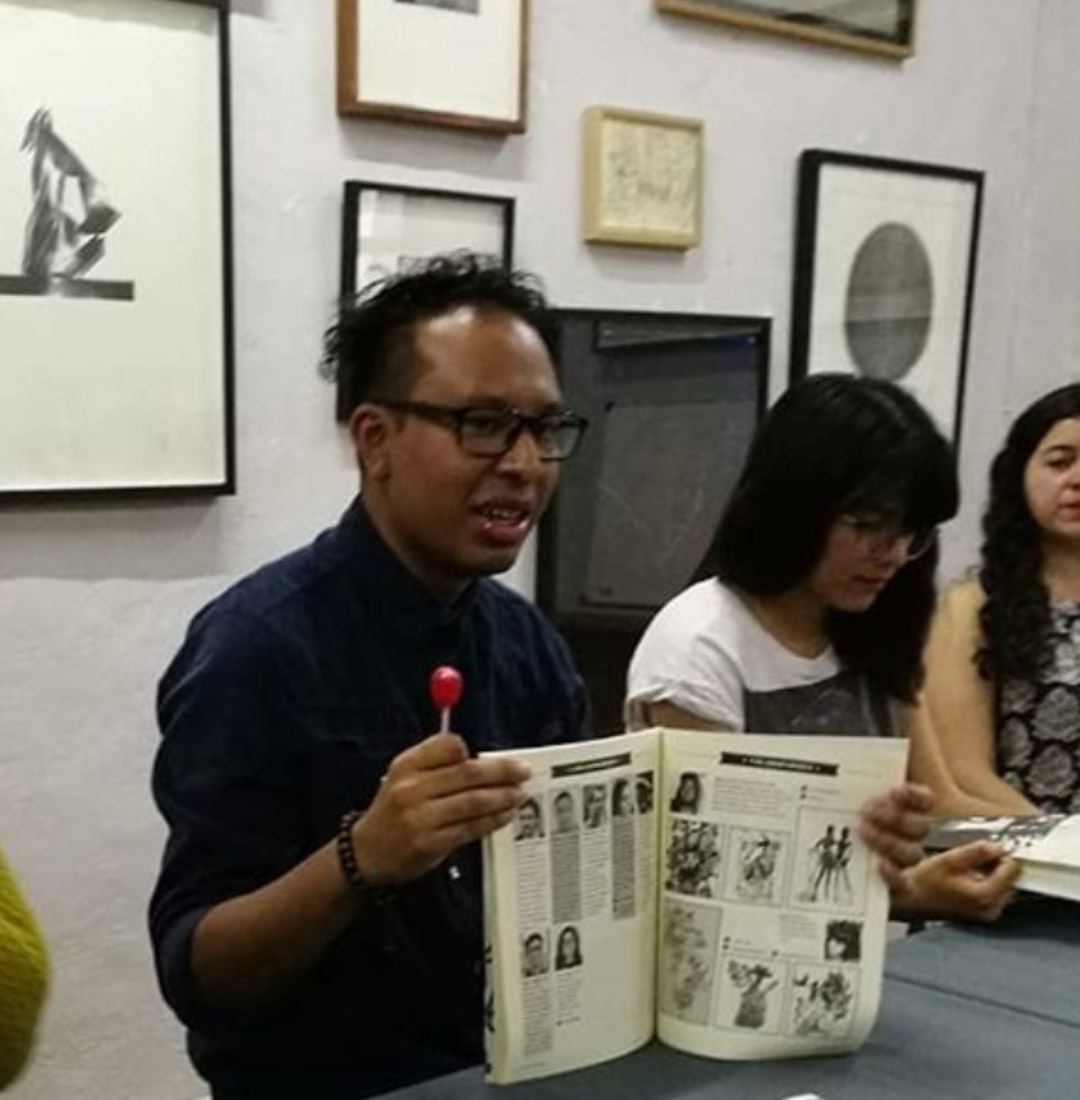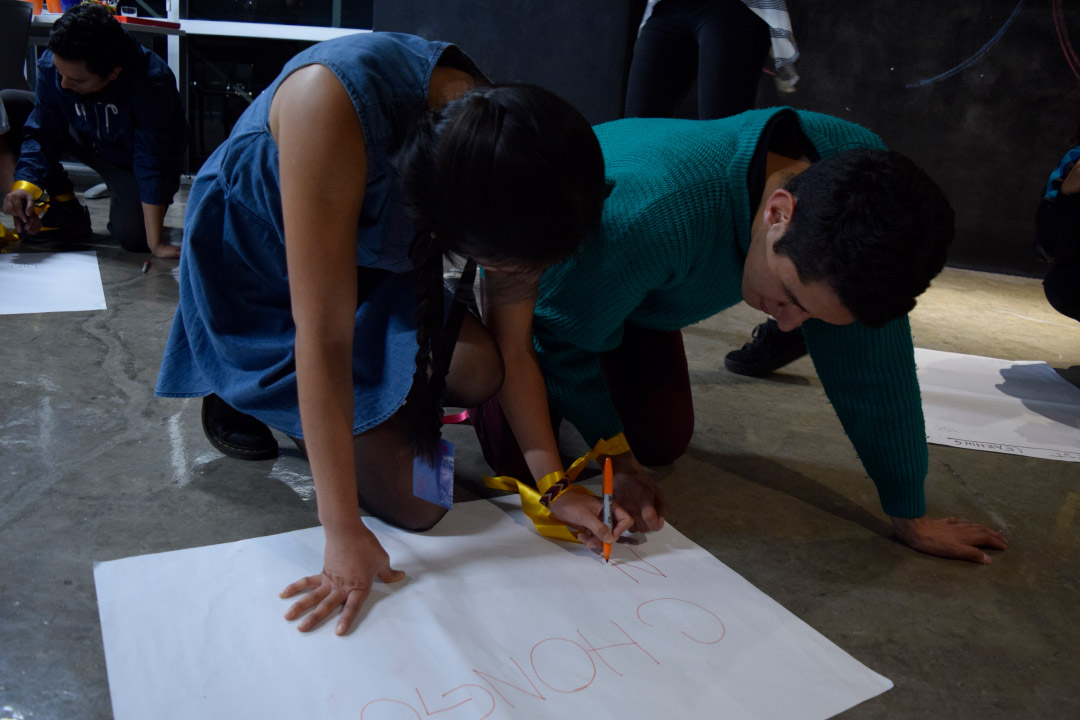
Partir del punto.
Partir del punto – revista Punto de partida is a project designed by Punto de Partida de Literatura UNAM, Revista de la Universidad de México, and Piso 16 Laboratorio de Iniciativas Culturales UNAM. It was conceived to involve three college students in the transformation of said magazine, who will oversee the editing, design, and circulation processes of 6 issues throughout a year, so that they can experience first-hand what it is to work in the publishing industry, in hopes to contribute to their personal development.
Aside from receiving guidance from the teams of Punto de Partida, and Revista de la Universidad de México to learn key aspects from the three areas, they can also participate in the activities of Piso 16’s Accompanying Program, as well as programming work sessions in the facilities. Moreover, they also get financial support for each issue of the magazine they make.
Selected.
Editing
A current resident of Mexico City, she studied Philosophy at UNAM, and is also a photographer. Her focus has been in the areas of the esthetics and history of photography. During High School, she was a member of the editorial board of Río Demente, a printed magazine dedicated to written literature about cultural events; she had five issues published. She performed her social service activities at Fondo de Cultura Económica as an assistant in the Department of Humanities, which was carried out by Edgar Krauss and Lizeth Mora, and provided further evidence of her interest in the editorial field.
From 2017 to 2018, she was a member of the project known as PAPIIT IN 402317 Heteronomías de la justicia: nomadismo y hospitalidad en el lenguaje, coordinated by Silvana Rabinovich, where she designed the project’s logo, collaborated in the creation of the website (she is also its manager), and in the montage of the exposition Nomadismos y hospitalidades: comcaac y saharauí at Museo Nacional de las Culturas del Mundo in Mexico City.
Design
He studied Graphic Design at UNAM’s Facultad de Estudios Superiores Acatlán and has won the DC Shoes and Xico: Intervención contests. He performed his social service activities at El Colegio Nacional, where he worked on the style editing of books published by the institution. He performs exceptionally in the use of Illustrator, Photoshop, Idesign, Premiere, Audition, and Muse.
Circulation
He has a Communications degree from UNAM’s Facultad de Ciencias Políticas y Sociales, which he got in 2018 on account of his thesis La narración de relatos verídicos a través del lenguaje del comic: análisis de dos historietas sobre el “caso Ayotzinapa”. Since 2014, he is a community manager and an assistant of the communication and public relationships areas at Dirección General de Publicaciones from UNAM. Aside from spreading his information on social media, he has participated in the organization and monitoring of activities in bookstores, book fairs, and other cultural venues.
Memorias 2019.







Partir del Punto 2019.
Elsa Aranzazú Blázquez Menes – Editorial
A while ago, during a workshop about editorial processes, someone said that only a few people are involved in the editorial trade by their own will, that a lot of people end up doing it by chance, by necessity, or out of luck, due to the scarce opportunities for its professionalization. This statement resonated with me because I didn’t study Philosophy having the idea of focusing my work on the editorial field in mind. I got to it out of curiosity because I wanted to pursue a personal hunch I had been feeling for a long time -which in part was passed down to me and was reinforced when I performed my social service activities at FCE-, and also due to the necessity of having professional and financial support beyond the one my studies could offer.
Our generation suffers from the overdemand of professional experience at a very young age, which is overwhelming and senseless. This is why Partir del punto is such a unique opportunity; being an editorial trainee here has given me the chance to grow professionally in a very pleasant workspace through direct instruction, guidance, a ton of responsibility and, -it doesn’t hurt to say it-, a proper remuneration. The experience I have today after a little over a year of working on the magazine, has expanded my horizons in the editorial world, and has given me a sense of personal certainty. It is true that there were some moments in which I felt overwhelmed for the amount of hard work involved -It is a mistake to think of it as a secondary activity- and because it is a magazine that carries a legacy of high quality and tradition. However, the accompanying, teachings, patience, and trust deposited in me by Carmina Estrada, as well as Eduardo Cerdán’s comradeship, have been crucial to judge in my own criteria and expertise.
In that regard, it is important to know that every editorial process is a collaborative effort: therefore, it is essential to express ourselves clearly, and promptly. It is also true that the best way to learn is by doing, by taking action; the manuals and guidelines feel empty until one is forced to face real cases, management constraints, the needs and requirements of each different type of text, the unexpected setbacks that must be solved rapidly, among other things. One of the most pleasant learnings I have ever had has been supervising the printing process, which is an often overlooked but necessary step to ensure the quality of the final product. Other essential parts of being an editor include bringing the magazine to its readers, developing public showcases, and having a direct relationship with authors, which have been equally gratifying challenges to overcome.
If I were to give any advice to whoever participates in future Partir del punto calls, It would be to think thoroughly about the sections and their content taking into consideration that every added element comes with a very specific workload, and it is necessary to search for collaborators for each genre, which is no easy task.
Another piece of advice is to manage time in a realistic and orderly way, always having the habit of taking notes, and knowing exactly what hasn’t been done yet, what needs improving, etc. Do not rely on your memory when there are so many things to be done.
Finally, always have the reader and the medium in mind. In a context in which there are a lot of independent editorial initiatives, what can you bring to the table so that this magazine can still be a distinguished one?
Partir del Punto
is an experience that allows its participants to identify if they really want to dedicate their professional lives to the editorial field. In my case, I have decided to keep knowing and exploring this world, which has captivated me throughout my life.

